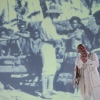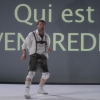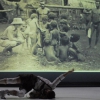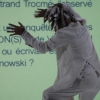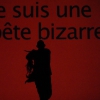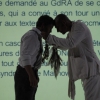Ethnographics, Malinowski's Syndrom
What should we say or do when we enter a new neighbour’s flat, a theatre, a faraway village or an urban squat for the first time? How should the body be placed, what should we look at, how should we behave? How to tell about this exotic or familiar other, then? And how to write about the untamed part of us, even? Ethnos, the people. Graphein, the written sign. Ethnographic or how to write about people. Texts are not always easy to find, whether it be texts by six contemporary authors confronted with the changing of an artistic place (2008) or Bronislaw Malinowski’s when he met the Trobrianders of Papua New Guinea in 1911. It is an even harder task when the observed, the joiner, the “savage”, the Heyalo warrior or Friday start writing as well, each in their own ways, with gestures, words, bodies, answering the original book and obviously casting a reflexive look on the Robinson-like characters, a look which can be both lucid and cynical at times. On stage, images, screened words, songs and, most importantly, a dancer and an actor are talking about our challenging encounters: exhilarating or painful ones, those causing Malinowski’s syndrome.

